What Are Shin Splints, and How Do You Prevent Them?
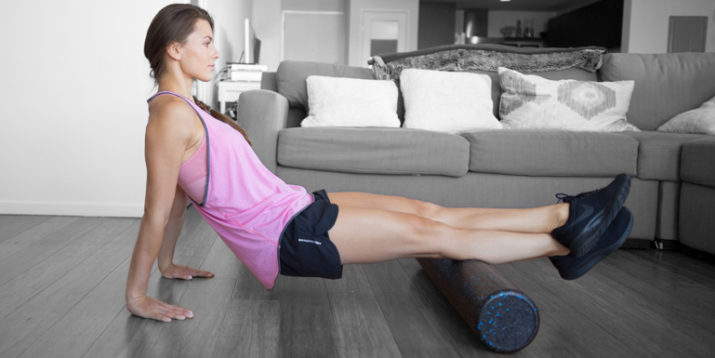
If someone asked you to pound your entire body weight onto your hands, repeatedly, for an hour a day, six days a week, you’d probably tell them to get lost. Yet, if you’re reading this, you probably do the exact same thing to your feet everyday when you work out, jog, or shoot hoops — and if you’re not careful about it, your feet will let you know they aren’t too happy about it, via your shins. Doctors and physical therapists call this message Medial Tibial Stress Syndrome. We call it shin splints.
Shin splints refer to pain in your tibia, or shinbone, and they’re caused by overloading the bone and the connective tissue that attaches your muscles to it. There are a few reasons why this happens, but also a few ways to prevent it, and even a few ways to treat it.
What Are Shin Splints?
“’Shin splints’ [also known as medial tibial stress syndrome] is one of those wastebasket terms for lower leg pain,” says Nadya Swedan, M.D., a physiatrist in New York City. “The pain can be on either side of the shin, depending on which muscles are involved. Runners, dancers, and anyone who does a lot of jumping can get them.” This painful injury can sideline you for weeks, but there are some things you can do to prevent it, or to relieve the pain if you’re already experiencing it.
What Do Shin Splints Feel Like?
The short answer? Not great. The longer, more helpful answer? That depends on which muscle in your lower leg has been overworked. Since multiple muscles surround your tibia (aka your shinbone), there are a few areas where you might feel shin splints.

The tibialis anterior muscle, which pulls the foot up toward your shin, runs along the outer edge of the tibia. If it’s overworked due to an underperformance of the muscle because it is weak, or because the workload was too much for the muscle, you’ll feel pain along the front, outside edge of the shin (commonly known as anterior shin splints). You’ll usually feel the worst pain when you try to activate that muscle and flex your foot (called dorsiflexion).
The soleus and posterior tibialis muscles, which help you point your foot (called plantar flexion) and stabilize your arch, and the flexor digitorum longus muscle, which curls your toes, run along the back of your lower leg. If these muscles are weak or overworked you might feel pain on the inside side of the shin. Again, the worst pain usually occurs when these muscles are engaged.
What Causes Shin Splints?
There are two main theories about what causes shin splints. Either the muscles get fatigued, resulting in an inflammatory response to the stress, or the bone itself is overstressed and doesn’t have time to remodel and get stronger between workouts. Most likely, it’s a combination of the two, according to a study in Current Reviews in Musculoskeletal Medicine. While it’s often not too serious, this can sometimes lead to a stress fracture. If that’s the case, see a doctor immediately.
There are many potential contributors to shin splints, including:
- Exercise volume. Going too hard, too fast, and for too long, without allowing your muscles and bones to recover. This causes the muscles to become swollen and irritated from overuse.
- Improper footwear. Worn out shoes or shoes without shock-absorbent soles can cause extra stress on the bone.
- Stride length. Long strides cause the muscles in the back of your lower leg to fatigue more easily, putting more stress on the bone.
- Biomechanics. Or, how your body moves. Studies have shown that people who overpronate (their feet cave inward when they run or walk) are at higher risk for shin splints and other lower-leg problems.
- Stress fractures. These are small, hairline cracks in your lower leg bones. If this is the case, the pain tends to be sharper and more localized, with tenderness a few inches below the knee. If you suspect a stress fracture, talk to your doctor.
How to Prevent Shin Splints
The first step to dealing with shin splints is to do everything in your power to avoid them from happening in the first place. Follow these tips to prevent shin splints.
- Progress your training slowly. It’s tempting to go big when you first start out, but pacing yourself can help prevent unnecessary lower-leg pain. If you’re running, gradually increase your mileage by about 10 percent every week or two, says Swedan. (Some people may be able to do more or less, depending on fitness level and where they are in their running program.)
- Upgrade your shoes. Make sure you have adequate cushioning and arch support in your workout sneakers. If you overpronate, you may need a shoe that has more support on the inner edge for your arch. (A good running store can outfit you in the right shoe, or you can ask your doctor about orthotics.) Avoid running in worn-out shoes that lack shock-absorbent soles — most runners should replace their shoes every 300 to 400 miles.
- Shorten your running stride. Runners with shin splints often take longer strides than necessary, which is especially problematic for overpronators, according to Robert Forster, P.T., a physical therapist in Santa Monica, California, and co-author of Healthy Running Step by Step. The deep muscles in the back of your lower leg get fatigued, which puts more strain on the tendons and ultimately leads to more stress on the bone. The fix: Shorten your stride and increase your cadence to maintain the same pace.
- Pay attention to your muscles. Biomechanics play a huge role in shin splints. Having weak muscles, tight muscles, or muscle imbalances (one muscle is stronger than its opposing muscle) can all increase the risk of getting shin splints. The same study in Current Reviews in Musculoskeletal Medicine found that “developing core stability with strong abdominal, gluteal, and hip muscles can improve running mechanics and prevent lower-extremity overuse injuries.” You can help prevent shin splints by strengthening weak glute, hip, and calf muscles, and stretching tight calf muscles. (See below.)
- Stick to soft surfaces. Each time your foot hits the ground, your musculoskeletal system absorbs a shockwave. The softer the surface, the smaller the shockwave. If you run, look for a good track that gives little resistance or consider running on grass or off-road. Whatever you do, stay off the pavement. If you work out at home, exercise on carpeted flooring or get yourself a small rug to stand on. Better still, a floor mat works perfectly.
Shin Splints Treatment
As much as you might try to prevent shin splints from occurring in the first place, sometimes you’ll find yourself with some lower-leg pain. When that happens, the first step should be to stop or cut way back on any activities involving impact, such as running, plyometrics, or dancing. The longer you continue with your normal activities, the longer it will take to heal the shin splints, says Swedan. And since there is a bit of swelling that occurs with shin splints, icing your shins can help to relieve the pain, although it might not get rid of the pain forever. Otherwise, proper exercises and stretches can help alleviate the pain more permanently.
Exercises and Stretches for Shin Splints
Weak, overworked, or tight muscles can all contribute to shin splints. Do these five exercises and stretches to help prevent aching lower legs, and/or relieve the pain.
1. Calf stretch
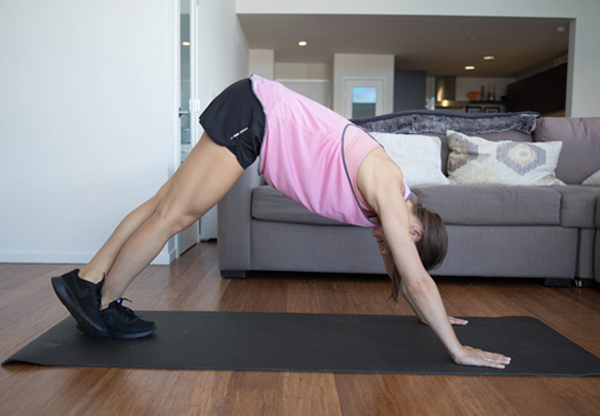
- Place your hands and your feet on the ground and walk your feet back so you’re legs are in a pike position.
- With your right foot placed firmly and flat on the ground, cross your left foot behind your right ankle so you feel a stretch in your right calf muscle.
- Hold for 10 to 30 seconds, then switch sides and repeat.
2. Calf rolling

- Sit on the floor with a foam roller under your right ankle, foot flexed with toes pointing up. Your left ankle should be crossed on top.
- Place your hands beside your butt and lift your hips to slowly move your leg over the roller, from ankle to knee.
- Do a pass or two with your toes up, then repeat it with your leg rotated in (so you’re rolling the inside portion of the calf) and then out.
- If you hit a spot that feels tender, stop and rest your weight on the roller until it releases, says Forster. Rolling for at least 30 seconds on a tight spot is usually suggested.
- Repeat on your left leg.
3. Toe curls
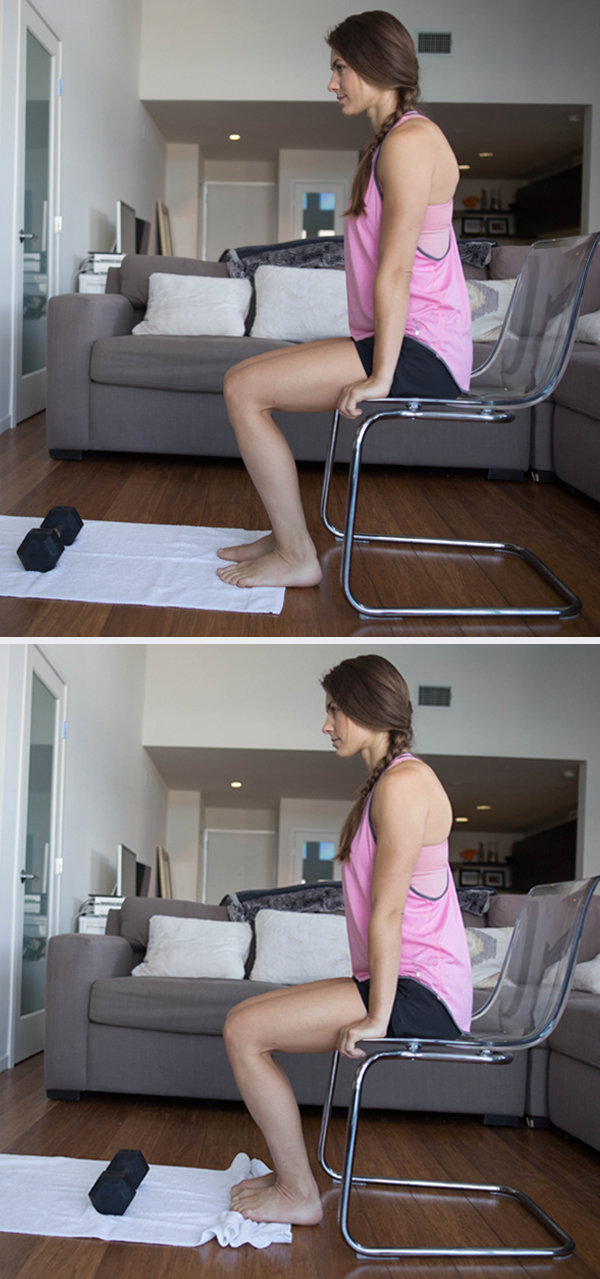
- Sit on a chair with your right foot on the short end of a small towel. Place a 1- to 3-pound weight at the opposite end.
- Use your toes to pull the weighted end of the towel toward you.
- When you can’t draw it in anymore, straighten it out and repeat once or twice.
Try without weights if it’s too hard at first; add weight and/or reps as you get stronger.
4. Clamshell
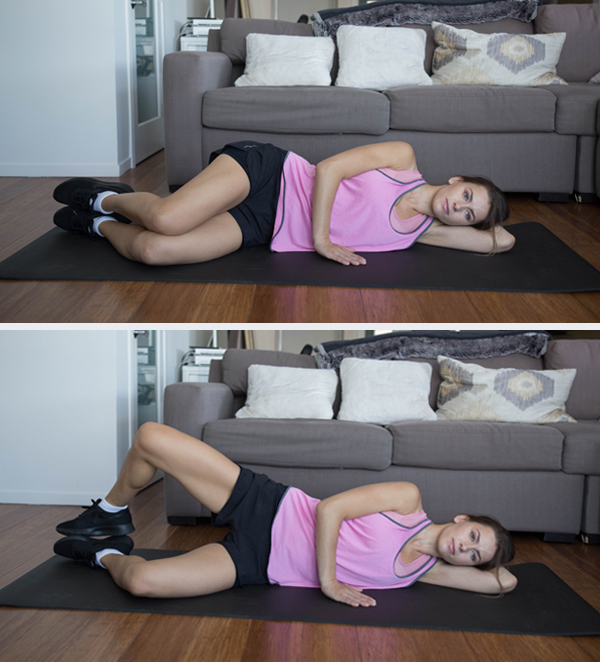
When you have a problem with the foot or lower leg, you should always look “up the chain” to identify problems in the hip that might be contributing to it. If your glute muscle isn’t strong enough to keep your legs in the correct position, your knees will bow in which affects your lower leg muscles.
- Lie on your left side with your knees bent and stacked on top of each other, your head resting on your hand or arm.
- Keeping your feet together and your torso stable (don’t rock back and forth), lift and lower your right knee 12 to 15 times.
- Switch sides and repeat.
5. Calf Raise
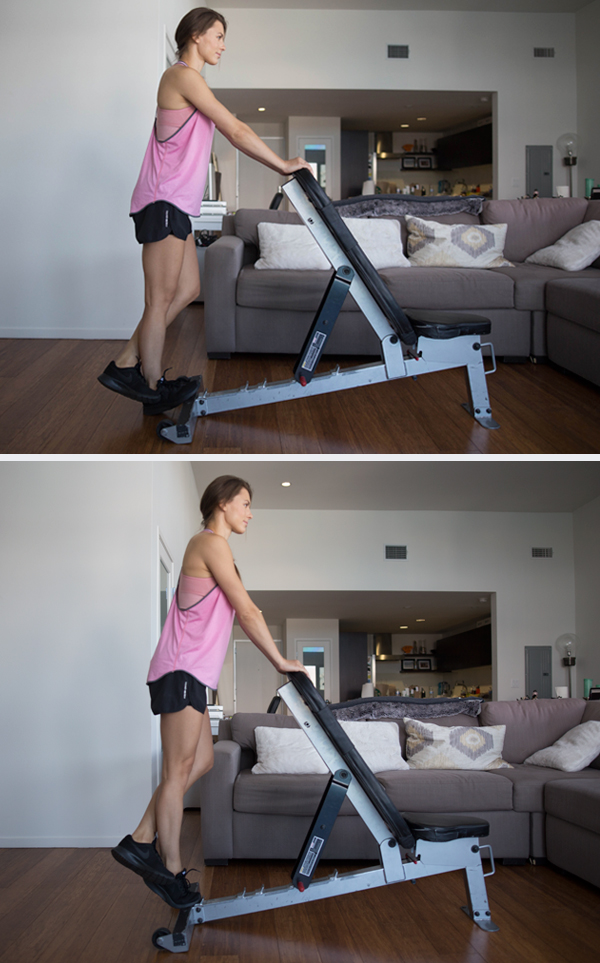
Similar to a weak glute, having weak calf muscles can contribute to shin splints. The calf muscle supports the shin bone by making it more resistant to bending, so you want it to be strong and stable.
- Stand on your right foot on a slightly elevated surface (like the base of a bench) with your heel off the edge. Wrap your left foot around your right heel, and lightly place your hands on something in front of you for balance.
- Drop your right heel below the raised surface, then raise up on to the ball of your foot with a straight leg. Lower, and repeat the movement with the right foot.
- Switch sides and repeat.
